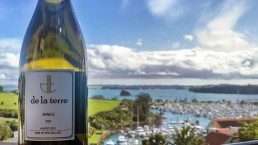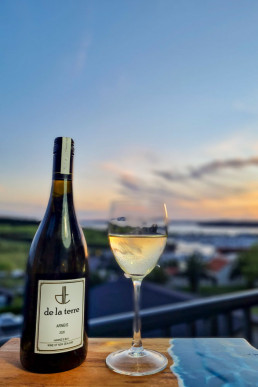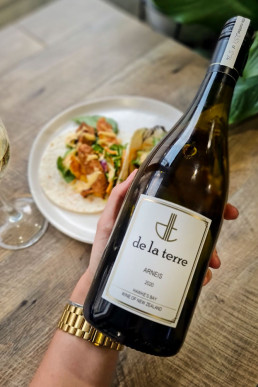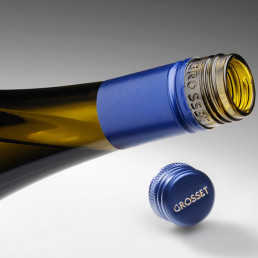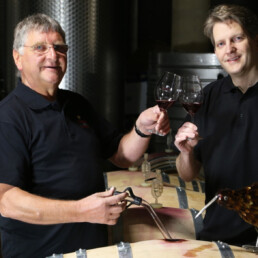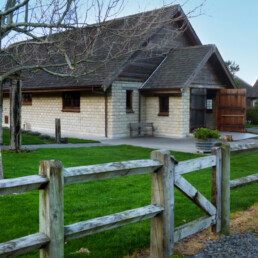New Release: 2020 De La Terre Arneis
Italy's "little rascal" Arneis now behaving in Hawke's Bay
For a grape that was nearly extinct less than 50 years ago and is still modestly planted in Italy, its home country, Arneis has found a new devotee in legendary NZ winemaker, Tony Prichard of de la terre winery Hawke’s Bay.
A Brief History of Arneis:
Arneis is a delicate white wine grape that originated (and is still primarily grown) in the Roero hills of Northern Italy’s Piedmont, just north of Alba; it thrives in the chalky and sandy soil of this region.
Arneis means “little rascal” in the local Italian dialect and is so named for its ability to beguile the most patient winemakers but also because it is a finicky varietal to grow. It’s often susceptible to disease in the vineyard and can struggle to retain acidity unless it’s grown in the right climate. But when you get it right it can make a beautiful, perfumed wine with texture and great acidity. As de la terre will be showing us this summer!
Traditionally, Arneis was co-planted with Nebbiolo, to distract the birds from the more prestigious red variety for Barolo. Even ending up in some red wines (but it is no longer allowed) to soften and add fragrance. It all but disappeared until the mid-20th century when local winemaker, Giacomo Giocosa, started the Arneis revival in the region. By 1989 Arneis wines received DOC status and DOCG in 2006. Production has been on the rise ever since, as consumers have come to appreciate its distinctive apricot, almond and tangerine aromas.
We asked winemaker Tony Prichard of de la terre his reason for planting Arneis and how it’s revealed itself in the Hawke’s Bay terroir:
“We planted Arneis because we have great success with our two Italian reds (Montepulciano and Barbera). Plus, de la terre is off-the beaten-track here in Hawke’s Bay so it is important we can offer customers and visitors something different from the usual fare of Chardonnay, Sauvignon Blanc, Merlot etc.
Arneis is a very unusual variety in that it achieves sugar ripeness very readily – we always get Brix levels in the 25 Brix range. It seems to have very tough skins so there’s never any issue with Botrytis etc. As a result of the naturally high sugars, the wine has a high alcohol – typically around 15%.
Another unusual thing about Arneis is that, despite the very ripe sugars, it maintains good acidity and a (very) low pH.
The aroma and flavour profile reminds me a bit of ‘canned peaches’ with hints of comb honey (especially the floral scent of comb honey). At times it shows touches of mandarin – probably due to the acidity.
In the 2021 Vintage, I barrel fermented ~45% in old French barriques to add another layer to the wine – it was just a bit too fruity as it was.
I also leave the wine in contact with its yeast lees (both in tank and barrel) and add a special enzyme which helps break down the yeast and exaggerate the textural and flavour effect of the lees. Yeast also do a great job of soaking and mitigating the ‘heat’ of the high alcohol.”
Obviously, Tony’s well-deserved reputation for cleverly combining experimental plantings with achieving top results gives us all the excitement and confidence we need to taste a cheeky new white wine for our summertime sipping. The Italian little rascal is going to become NZ’s little darling!
What Does Arneis Wine Taste Like?
With its aromas of blossom, fresh pear, apricots, and a hint of hazelnut, Arneis goes well on its own or alongside light summer dishes. It’s the perfect partner for garlicky seafood spaghetti, platters of roasted vegetables and light summer salads. Cin! Cin!
To place an order please email us at orders@dnfinewine.com.
